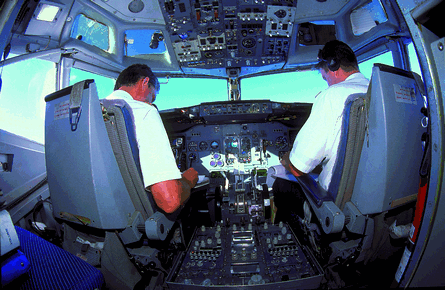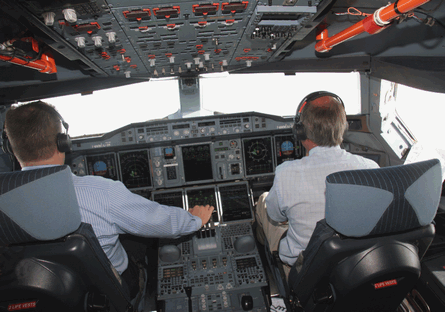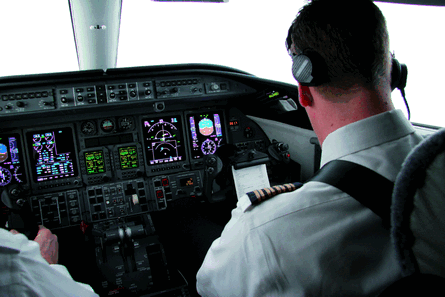Managing pilots for maximum efficiency - while complying with a mass of safety-related regulations - is not easy, especially when the goalposts keep moving.
Regulations change and develop, as is happening in the process of converting European joint aviation requirements (JAR) to European Aviation Safety Agency regulations, or like the International Civil Aviation Organisation's new required grades for aviation English standards, without which pilots will soon risk being banned from international routes.
Meanwhile, EASA is preparing to require carriers to submit a mandatory fatigue risk management system (FRMS) tailored for their specific operation, as a back-up to Europe's flight-time limitations rules. Most airlines have not even heard of FRMS, but many will soon have to cope with it.
Flight International's Crew Management Conference in Dubai on 1-2 December will address these specific issues and many other changes that face the operations, training and human resources departments at airlines and business jet fleet operators.
 |
|---|
© Sunset/Rex Features |
Capt Ed Davidson, senior vice-president fleet operations at Emirates, the lead sponsor of the conference, has this to say about the heightened need for operational best practice: "Today we are navigating arguably the most challenging time in the history of the commercial airline industry. The combination of volatile fuel pricing, reduced yields and credit market turmoil is placing significant demands on flight operations managers in all air carriers. The Crew Management Conference will provide much needed direction and insight into the challenges and industry best practices for flight operations leaders across the full spectrum of the business."
Davidson adds: "The unprecedented management challenges we face today compel us to ensure that our crews are able to take full advantage of all available opportunities for improving operational efficiency."
CHALLENGE AND OPPORTUNITY
Change can mean challenge, but also - potentially - opportunity. For example EasyJet has succeeded in making its FRMS a win-win-win solution for crew quality of life, fatigue reduction, and pilot productivity, but it had to work hard to get there. The new multi-crew pilot licence (MPL) offers another approach to training pilots, but is it suitable for all carriers?
Meanwhile, operators are under pressure to adapt to air traffic management and procedure changes, some of them regional, associated with ATM capacity and congestion, some of them local, associated with efficiencies like time and fuel saving. These affect pilots' tasks and the skills they need. Flightcrew have continuously to develop their skills to make the most of improving technology, and to face the demands of a fast-developing ATM environment. For example, precision area navigation (P-RNAV) was just an idea a decade ago, but it is now a requirement in increasing numbers of busy terminal areas. Airport use of required navigation performance approaches is also proliferating, and the inability to make use of them puts an airline at an operational and cost disadvantage.
 |
|---|
For operators that care about quality, it is not easy to recruit good pilots, especially experienced commanders, instructors or check airmen. The message from the International Air Transport Association, the Flight Safety Foundation (FSF), and Boeing's training organisation Alteon, is that just because the economic downturn is making it relatively easy to find qualified pilots compared with a year ago, operators should not think they can drop preparations for pilot sourcing in the next few years.
IATA says that in the medium and long term, training organisations do not have the capacity to provide the number of pilots an expanding industry will require. It says the world needs to produce 17,000 pilots a year to cope with the combination of senior pilot retirements and world fleet growth.
SECTOR GROWTH
And that is just the airlines. Business aviation is growing faster and looks less vulnerable to the downturn than airlines. And although the average business or corporate aircraft is usually smaller, the crew size is mostly the same - two fully qualified commercial pilots. An idea of the kind of growth in this sector can be gained from Eurocontrol's planning figures: the agency says there are 70% more business jets on the European register now than there were two years ago, and somebody has to fly them.
The reason the Flight Safety Foundation has joined IATA in taking up the issue of long-term pilot training provision is that it sees a future pilot shortage becoming so serious that it could have a detrimental effect on flight safety. At the Crew Management Conference the FSF will present strategies for reducing the risk of future pilot shortages.
IATA has launched a "training and qualification initiative" that has four goals:
- To widen the resource pool "through marketing and awareness initiatives and better selection criteria".
- To increase global pilot training capacity.
- To develop training standards.
- To provide an updated set of standards for flight training devices.
Meanwhile, flight training organisations (FTO) are reacting to the sudden drop in demand for ab initio trainees and suitably type-rated commercial pilots by reducing capacity.
One of the new pilot training options available to airlines is the much-misunderstood ICAO MPL. Airline decision-makers face the problem of whether to take up this form of training or stay true to traditional methods. They are not helped by a lack of disseminated information about how the pioneers of the new licence are faring with training programmes. There is also misinformation in operations departments generated by the anecdotal opinions of traditionally trained management pilots who themselves have been misinformed (or partially informed) about MPL. It is an area in which a little knowledge is a dangerous thing, and this was demonstrated by several airline delegates during debate at the September UK Royal Aeronautical Society Flight Crew Training Conference.
 |
|---|
© Max Kingsley-Jones/Flight International |
The Crew Management Conference will address this area of confusion with three presentations - one comparing traditional pilot training with the MPL, a second on how an airline can work with an FTO and its national aviation authority to set up an MPL course in its home country, and finally a presentation by Denmark's Center Air Pilot Academy, the only FTO so far to have delivered MPL pilots to the line as working first officers. The academy will reveal how they performed and what the differences were found to be between traditionally trained pilots and MPL graduates.
One of the changes the MPL brings is a greater and earlier use of simulation. This is a natural development because of the massive strides in fidelity that simulation has made over the past 20 years, combined with a dramatic drop in the price of high-fidelity synthetic training, and finally a major change in attitudes by ICAO and national aviation authorities over the use of simulation.
This change in regulatory attitudes - and the regulations themselves - demonstrates the authorities' recognition of the huge advances in what simulation can do for training departments, and the fact that this can confer operational quality control benefits. The Crew Management Conference provides two presentations on how the latest in affordable simulation can improve pilot training without adding cost, and another about how a large training organisation (Airbus) is taking advantage of rule changes relating to simulation.
The MPL is, theoretically, the first pilot licence that could represent a global, rather than a national piloting standard, because the ICAO specification for it is more prescriptive about piloting performance standards than licensing rules have ever been. EASA talks about what a single regional pilot licence has achieved for European aviation, and whether a global piloting standard is feasible or desirable.
One of the biggest unchanging costs airlines face each year is the price of damage to aircraft on the airport apron or during taxiing. This runs into tens of billions of dollars annually and is usually uninsurable. Could pilot awareness reduce this? At the conference, the FSF will reveal how to cut avoidable airline losses on airport manoeuvring areas.
All the subjects to be presented in Dubai are about opportunities to lower costs by raising operational quality control standards, and by creating a partnership with pilots to get the best out of a company's assets while inspiring loyalty in customers.
Source: Flight International
















